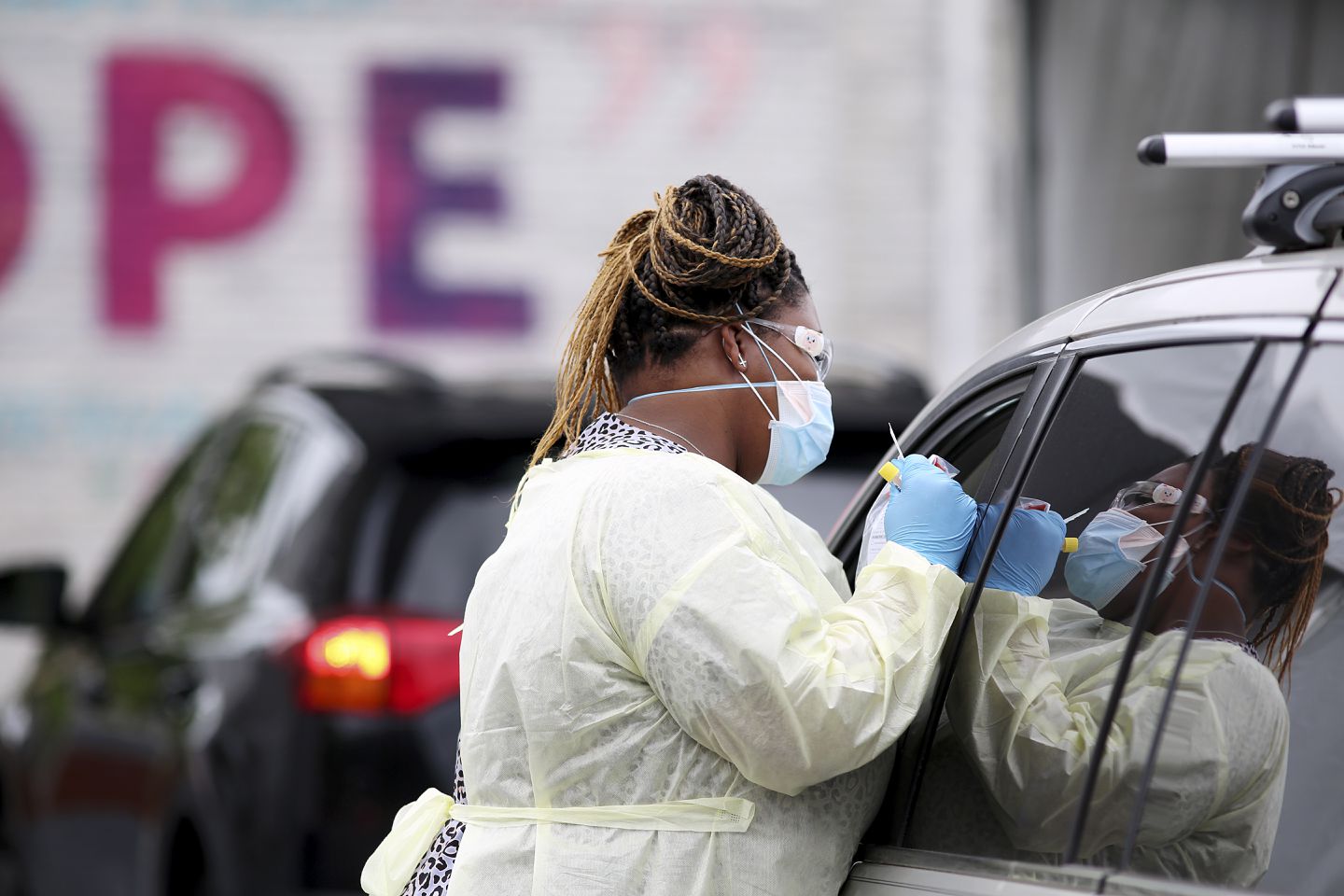By Camille Caldera Globe Correspondent,Updated June 26, 2022, 1 hour ago
Until last week, Dr. Ali Mokdad expected the United States to have “a very good summer” in terms of COVID-19. Projections by the Institute for Health Metrics and Evaluation, where he works, forecasted falling cases, hospitalizations, and deaths through at least September.
Then, circumstances changed: Researchers discovered that BA.4 and BA.5 — subvariants of Omicron spreading in the United States — are “immune escapes,” adept at avoiding the antibodies the body produces after vaccination or infection to neutralize the virus.
“That has changed our view for what will happen this summer,” Mokdad said. Though he still expects cases to decrease, the decline will be slower and smaller than projected.
Dr. Dan Barouch, director of the Center for Virology and Vaccine Research at Beth Israel Deaconess Medical Center, said he anticipates the subvariants will spawn a summer of “substantial infections,” but low rates of hospitalization and death.
As of last week, BA.4 and BA.5 accounted for between 29 and 41 percent of cases in the United States, according to estimates by the Centers for Disease Control and Prevention — figures that experts say should rise in the weeks to come.
“I expect that BA.5 will likely become the dominant virus in the United States this summer,” Barouch said.
Barouch published a study in the New England Journal of Medicine on Wednesday thatfoundthat BA.4 and BA.5 are far better at avoiding antibodies than any prior strains — three times better than BA.1 and BA.2, and 20 times better than the “original” COVID-19.
“What we’re seeing with each subsequent variant is iteratively higher levels of transmissibility and higher levels of antibody immune escape,” he said. As a result, “we’re seeing high levels of infection in populations that are highly vaccinated, as well as populations that have a high level of natural immunity to the prior variants.”
COVID vaccines work by prompting the body to produce an immune response, including antibodies, to fight the virus. As the subvariants start to avoid those antibodies, vaccination affords less and less protection against infection.
However, experts emphasize that vaccines remain very effective at preventing severe cases of COVID-19.
“If people have vaccine immunity or natural immunity, then they have substantial protection against severe disease,” Barouch said.
Omicron and its subvariants also tend to be less severe than variants like Delta, said Mokdad, who estimates 80 percent of infections with Omicron are actually asymptomatic.
As for the summer, Barouch said he “can’t rule out that there will be a surge,” like there was last summer.
Mokdad said there is “a remote possibility” of a third wave over the summer. But he expects cases to start rising again around the start of October, both because of changing seasons and waning immunity.
Dr. Michael Osterholm, director of the Center for Infectious Disease Research and Policy at the University of Minnesota, said it’s impossible to predict the course of COVID-19.
“Anybody that models this more than a couple of weeks out is basically just using pixie dust,” he said. “There is no pattern whatsoever developing from a seasonality standpoint. It’s all being driven by the variants.”
For Osterholm, variants and subvariants are a “complete wild card” in the epidemiological equation.
“We just have to be humble and acknowledge, we don’t know,” he said.
Mokdad conceded that his expectations for summer and fall are “conditional on not seeing a new variant.”
“This virus is not done with us,” he said. “It’s going to keep infecting, it’s going to keep mutating and we hope that the mutation that’s coming next is less severe, or similar in terms of severity to Omicron. Otherwise, we are in big trouble.”
Though there’s no controlling how the virus might mutate, experts emphasized that behavior still influences an individual’s chance of contracting COVID-19.
Precautions such as masking and distancing remain incredibly important for seniors and immunocompromised individuals, and anyone who interacts with them, since they are still susceptible to severe sickness, said Barouch.
“With pandemic restrictions being lifted, it’s important to take a judicious approach and to realize there’s still a substantial amount of virus circulating,” he said. “Even if there is a substantial degree of population immunity and if the risk of severe disease is lower, it’s not zero. People who get infected — even if they’re vaccinated and boosted — still can become quite ill.”
Camille Caldera can be reached at camille.caldera@globe.com.


Leave a Reply